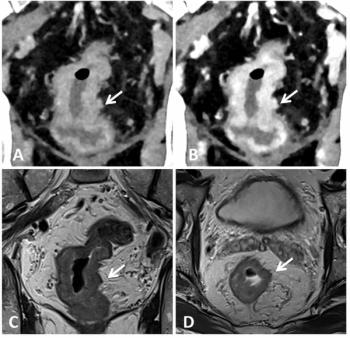
Three-T prostate MRI addresses therapy
Minimally invasive approaches that promise to reduce post-therapy morbidity are currently being investigated, but their efficacy will depend on physicians' knowing the exact location of cancer within the prostate. This is where the quality of images attained with 3T MRI could come in, according to Dr. Peter Choyke, chief of molecular imaging at the National Cancer Institute.
Minimally invasive approaches that promise to reduce post-therapy morbidity are currently being investigated, but their efficacy will depend on physicians' knowing the exact location of cancer within the prostate. This is where the quality of images attained with 3T MRI could come in, according to Dr. Peter Choyke, chief of molecular imaging at the National Cancer Institute.
National Institutes of Health researchers have been using 3T for prostate MR exams since 2003. Their typical workup consists of high-resolution T2-weighted scanning, MR spectroscopy, and dynamic contrast-enhanced MRI. They also perform diffusion-weighted MRI and blood oxygen level-dependent imaging at 3T.
"Each of the sequences that we run benefits from the higher signal that you get at 3T," Choyke said. "For T2-weighted scans, we push the spatial resolution. For dynamic contrast-enhanced MRI, we use the better temporal resolution afforded by 3T. For MRS, we use the better spectroscopic resolution."
Their data are currently used by radiation oncologists and surgeons to improve the accuracy of conventional treatment strategies. Focal approaches to prostate cancer therapy are likely to require more information than MRI alone can provide, however. Choyke and colleagues are investigating whether PET/MRI fusion could be the answer. This combination of functional and high-resolution morphologic information may provide the exquisite localization of prostate pathology that is required.
"There is no question that 3T MRI is going to give the best anatomic depiction of the prostate, with the highest spatial resolution, of all the modalities," Choyke said. "But it may not have the highest sensitivity to cancer detection, so it has to be combined with something else."
Newsletter
Stay at the forefront of radiology with the Diagnostic Imaging newsletter, delivering the latest news, clinical insights, and imaging advancements for today’s radiologists.



























